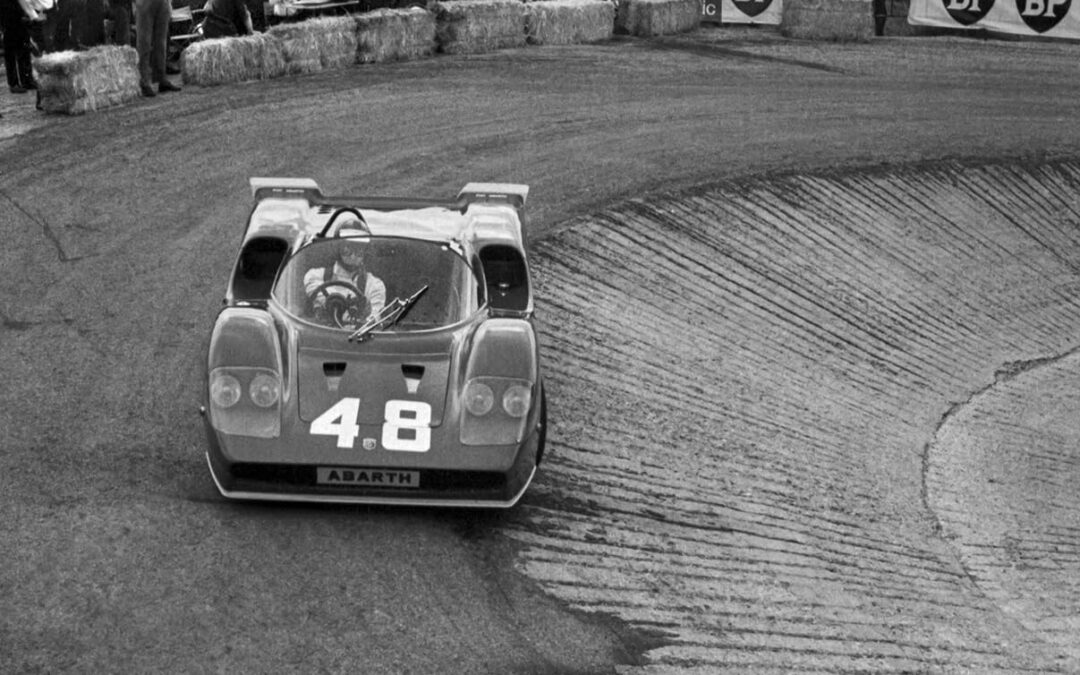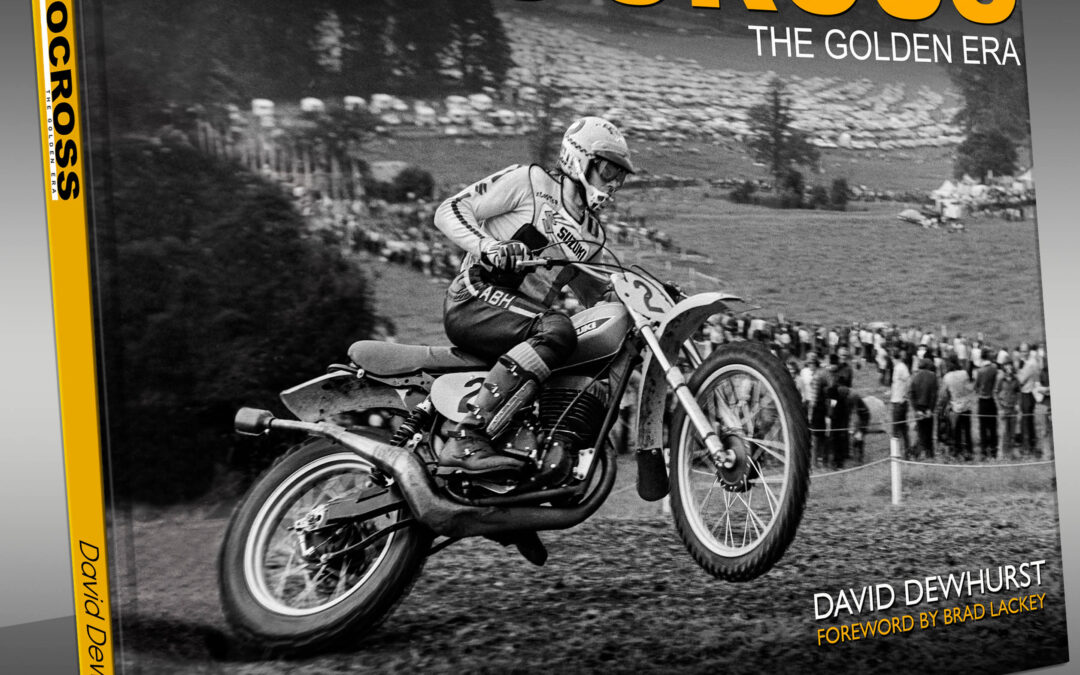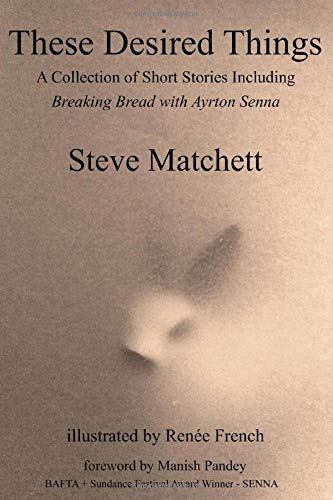
These Desired Things, Steve Matchett’s much anticipated fourth book, is a stimulating, philosophical offering; a tour de force in creative writing. Although, defining the book’s genre seems largely superfluous, for its immersive, lyrical text is part fiction, part memoire, part autobiography. Complete with a suitably insightful foreword by Manish Pandey (writer of SENNA – the movie) and with its chapters illustrated throughout by the visually enthralling artwork of Renée French, Matchett’s new book is both engaging and exceptionally pleasing on the eye.The chapters of the work are presented as a collection of eleven short stories: all of them varying in their individual plots, their settings and their style, yet all of them remain essential elements of the whole; for running through each is a series of subtle, uniting threads. And through Matchett’s captivating telling of these affectionate tales, the author’s (already renowned) written ‘voice’ attains a whole other level of intimacy: The reader feels truly bonded to the writer’s emotions.It is also encouraging to note, These Desired Things is no continuation of the author’s previous works: Matchett’s F1 trilogy stands complete. This latest book, therefore, represents a refreshing new mission. Indeed, by introducing to us his pair of delightful (if mysterious) fictional characters, creations so readily brought to life by the author in two of this book’s short stories – The Chestnut Tree and The Shadows Cast of Candlelight – it seems that Matchett is already laying out his plans for a future novel.Undoubtedly, the diversity of all eleven stories – and the inimitable style of the storytelling – is sure to introduce a whole new readership to Matchett’s writing. That said, the author has been most careful to include stories that will appeal to those already familiar with his earlier books – those readers with a knowledge and passion for Formula 1 motor racing. And, most likely, these same passionate readers will be moved to tears on reaching the closing lines of the book’s penultimate chapter, Breaking Bread with Ayrton Senna.Steve Matchett gives abridged readings of this truly atmospheric story during his public appearances, his after-dinner events. Now, however, for the first time in print, this most endearing homage to the fallen, three-time world champion driver, Ayrton Senna, is presented in its full, unabridged form.

Come with me into a world I have neither invented nor exaggerated. To a world that, as I pressed the shutter button of my camera, looked exactly the same as the photos. To a world that wishes to remain secret so as to quietly disappear over time.
Even as I took my first photos of car wrecks in 2006, I told myself I was collecting material for a book. The journey, however, turned out to be much longer, trickier and more interesting than I first thought. Sometimes things worked out, sometimes they didn‘t, and many times I asked myself if there was any point in continuing and if I hadn‘t already exhausted the topic, but I never threw in the towel.
You may ask yourself, as do others, how I go about looking for cars. Where do I find them? How do I know where to look for them? I have been publishing photos of rusty car wrecks for years now. I therefore have many friends among vintage car enthusiasts, and whenever they come across a rusty vehicle, they send me the classic message: „Vladimir, we‘ve got something for you.“ Since the world is not as big as it used to be, and the Internet reaches almost anywhere, people from all over the world write to me. I am, of course, very pleased that I am not the only one that finds meaning in such a challenge. It is a kind of symbiosis – people give me tips, and I try to reach the location, talk to the owner and document whatever I can. If it weren‘t for these enthusiasts, I would most likely not even enjoy the process and this book would never have been created.

Born in Shropshire soon after the end of the First World War, venerable motoring writer W de Forte has driven everything from his grandfather’s first Daimler, to modern-day supercars … ridden everything from vertiginous Victorian penny farthings, to high velocity twenty-first century superbikes … travelled everywhere from the permafrost of the Arctic Circle to the baking sands of the Baja Peninsula … and met everyone from Tazio Nuvolari to Valentino Rossi.
W de Forte enjoyed an eventful career as a top-level journalist, spanning 75 years, during which time he tested many thousands of cars and reported on countless automotive events around the world. This made him uniquely qualified to comment on all aspects of classic and vintage motoring and motorcycling.
Relatively undimmed by age and ague, even in his mid-90s, de Forte had no plans to retire, but, in late 2014, a high-speed prang while testing a wayward Rudge Ulster at a racing circuit in Belgium brought him up with a jolt, both literally and metaphorically. After recuperating in hospital, he settled down to write his long-awaited and much requested auto-biography.
This unique and insightful book is the result. Packed with fascinating stories about classic cars and motorcycles, A Life Awheel – the ‘Auto’ Biography of W de Forte is an account of an extraordinary motoring life, and the story of motoring in the 20th century.
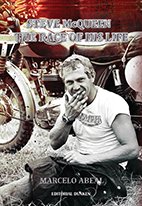
SOLD OUT
Steve McQueen had a terrible childhood. This made him the man he was. Abandoned by his father before he was born and left aside by his mother, he grew up almost like an orphan until he was an adolescent and became the greatest Hollywood star ever. McQueen was a magnet at the box office because, rather than an actor, he was a style. He understood and took advantage of this, even in spite of making the list of his enemies even longer. People said he was a very difficult person, simply because he was not a tame lamb which could be easily handled. He knew what was good for him. He argued to death with directors to have things done his own way. He acted like this in all aspects of life, always on the edge. By the time he died, he had accumulated 55 cars, 210 motorbikes and was beginning to take an interest in old airplanes. But his love was not just collecting. He used to say ” I’m not sure whether I’m an actor who competes or a driver who acts”. Marcelo Abeal, the author, is an enthusiastic fan of Steve, as well as an actor and stuntman himself. After doing thorough research on Steve’s life for over three years, he now shares his work in this unique compilation of observations, anecdotes, exclusive interviews and comments made by close friends, colleagues and people who knew Steve very well. Steve’s most memorable films are “The Magnificent Seven”, “The Great Escape” (exclusive comment by Tim Gibbs, stunt), “Bullitt” (exclusive interview to Don Gordon, one of his best friends), “Le Mans”, “The Getaway”, “Papillon”, “Tom Horn” (exclusive interview with his friend, actor Mel Novak), and the series “Wanted Dead or Alive” (exclusive interview with Loren Janes, his stunt all his life). Plus, an interview with the last doctor who assisted him, Dr. Cesar Santos Vargas.

Few people have been as deeply involved in motorcycle sport as Chris Carter, a larger than life character and raconteur who was for a great number of years a journalist, commentator and broadcaster at the very top level of motorcycle sport. This memoir is a funny, fascinating and unique insider view of professional motorcycling over more than six decades. From scrambling in the 1960s, to four decades of international road racing – including Daytona and Macau – and on to trials and speedway. Packed with remarkable stories and amusing anecdotes, as well as interesting reflections and astute observations, it is a light-hearted, highly readable autobiography which lifts the lid on an extraordinary world. In past times, racing paddocks were open and friendly, and Chris felt part of a big, happy family. He lived cheek by jowl with the very top riders and shared their triumphs and tragedies; to many, he was a friend and confidante. Honest, frank and direct, Chris tells things exactly as they were, and provides insights into a fast disappearing world.
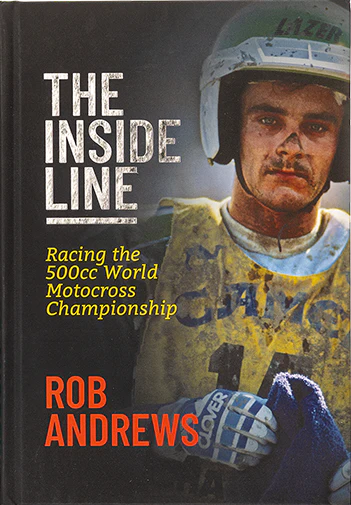
A unique, detailed, and comprehensive first-hand account of life as a professional racer competing and contending in the 500cc world motocross championship.
Tracing the journey of Great Britain’s Rob Andrews, from unremarkable amateur, through to factory Kawasaki rider, 500 GP contender, and member of Great Britain’s 1985 Motocross des Nations team, The Inside Line goes where no book has gone before: deep into the heart of life as a professional grand prix motocross racer.
Superbly illustrated with nearly 400 incredible images from some of the most acclaimed photographers in the industry, The Inside Line takes the reader on a fascinating odyssey of insight and intrigue.
Learn the inner workings of the grand prix motocross world, get answers to long-pondered questions, and discover things you never knew. There are facts that will surprise you, anecdotes that will make you laugh, and brutally honest, never-before-published information.
Find out how it felt to race against motocross legends on the world’s most famous and revered grand prix circuits. Discover what it was like to race a full-factory 500 for Team Kawasaki. Learn how the riders on the nomadic grand prix circuit lived, traveled, trained, and practiced while on the road.
Join Rob as he guides you – in his own words – through the highs and the lows, the adrenaline and the sacrifice, the jubilation and the occasional devastation of his extraordinary journey from raw novice all the way to the biggest stage of all: the 500cc world motocross championship.
And by the end you’ll understand just what it was like – and just what it took – to be a grand prix motocross racer.
The Inside Line is a mammoth, heavyweight, 416-page, 93,000-word hardback book of uncompromising quality and detail.
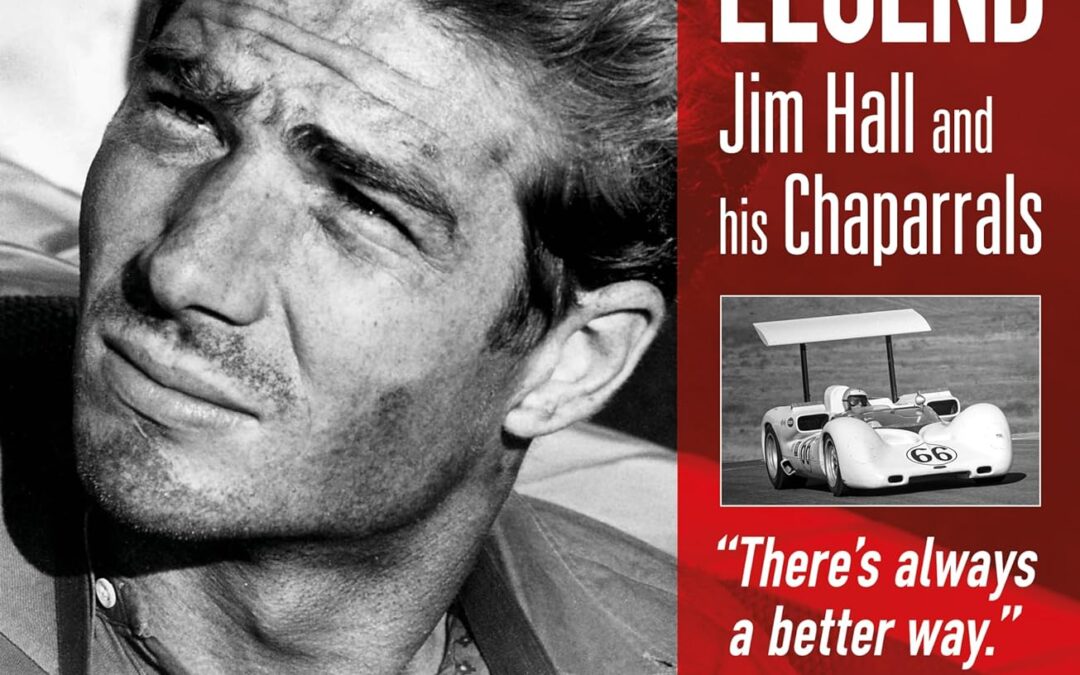
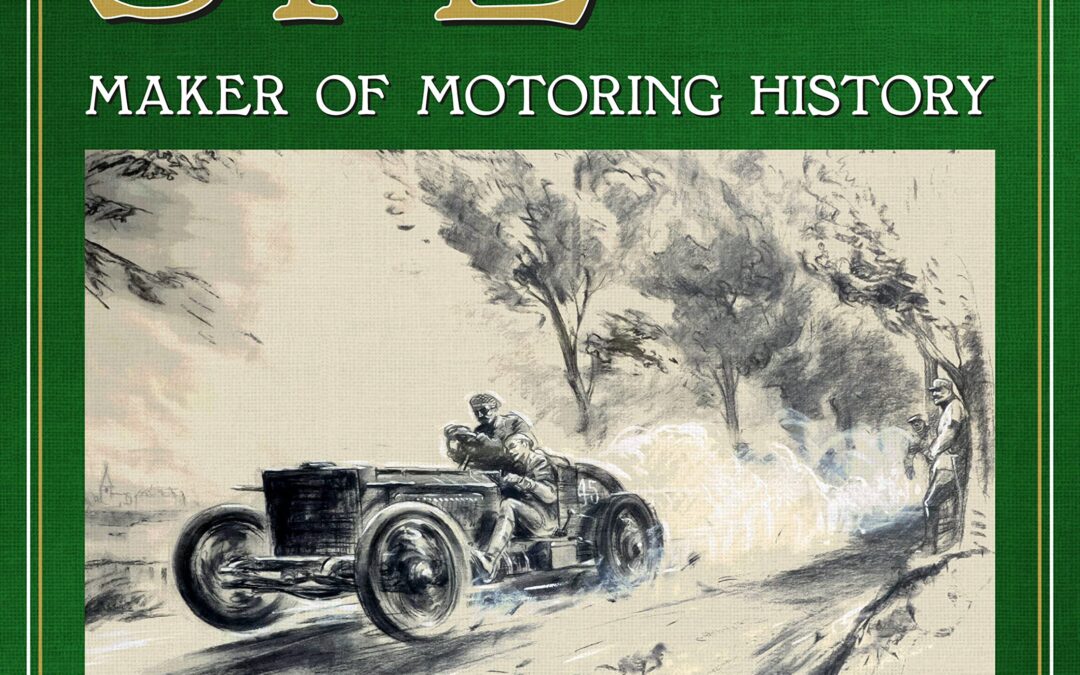
Selwyn Francis Edge, invariably known simply as ‘SF’, was a highly significant pioneer of motoring in Britain. When, in 1902, he drove a Napier to victory in the Gordon Bennett Cup, a mighty event on public roads between Paris in France and Innsbruck in Austria, he initiated serious British endeavour in motor racing.
He was deeply involved in the birth of Brooklands, setting a 24-hour solo driving record there when the circuit opened in 1907. As a towering industry figure most closely associated with Napier and AC Cars, he played an important role in the growth of car manufacture in Britain. In the words of ‘Bentley Boy’ S.C.H. ‘Sammy’ Davis, ‘His keen grey eyes, the bushy eyebrows and the hawk-like face… made him a notable figure in any assembly.’
- Dedicated cyclist: SF’s early interest in cycles led to racing achievement on two wheels and three, including setting records for round trips between London and Brighton, and taking
- Introducing the motor car to Britain: from his first driving experience, in 1897 with a De Dion-Bouton, SF quickly became an influential advocate of all things automotive in a country that initially lagged far behind France.
- Motor racing pioneer: after early competitions on motor tricycles, SF became a regular competitor in the heroic long-distance races of mainland Europe, famously winning the 1902 Gordon Bennett Cup in a Napier and becoming a national celebrity.
- Growth of Napier: with SF as a guiding force, this long-established engineering company evolved into the manufacturer of some of the finest cars of the Edwardian era.
- Brooklands: upon the circuit’s opening in 1907, SF drove a Napier solo for 24 hours at an average speed of just over 65mph, establishing a record that stood for 18 years.
- AC Cars: after the First World War, SF helped to develop AC Cars into an important manufacturer of sporting cars, with more attempts at speed records along the way.
This biography uncovers the life of an extraordinary man whose achievements deserve to be far more widely recognised.

• The ultimate insider’s guide to the VW Bus
• Features interesting and unusual stories about the popular car model
• Fully illustrated with 111 full-page color photographs
The VW Bus is not just a car. It is sentimental, a part of the family. A way of life on wheels. That’s why most of them have names. And almost everyone has some sort of connection to the VW Bus. This book offers fascinating stories about one of the most popular automobiles of all time and the most successful camper van in the world – a kaleidoscope from the world of VW Buses. In 111 chapters, you will learn interesting, funny, surprising and emotional things about a vehicle that was originally intended as a simple delivery van and then made history as a multifunctional vehicle concept. Author Christian Schlueter, himself a passionate fan of the car, tells endearing, detailed and exciting stories about these legendary vans. He presents models with their production history and special features, introduces visionaries and gives an insight into the car industry. He reports on world records and adventure trips, as well as freedom and nostalgia. A wonderful compendium with photos about the world’s fascination with the VW Bus – a must for every fan and lover of this cult car.
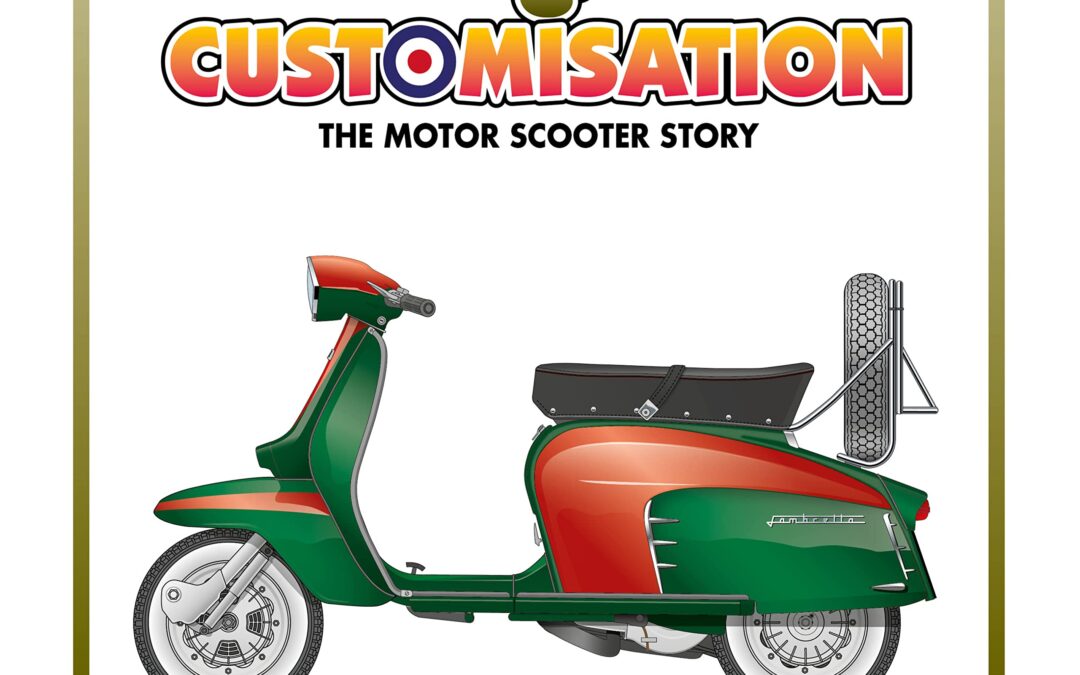
This charming book, packed with unique artwork and engaging photographs, celebrates scooter mania.
In a feast of nostalgia, it takes us through the evolution of the scooter, focusing naturally on all things Lambretta and Vespa, but also covering plenty of obscure and eccentric machinery along the way. Scooter enthusiasm in all its forms receives generous attention, whether as fashion accessory for fifties movie stars, style-conscious transport choice for the Mod generation, or object of worship for today’s retro-loving adherents.
- Scooters take off: rising from the rubble of post-war Italy, Piaggio emerged first with its Vespa (meaning ‘wasp’), soon followed by Innocenti and its Lambretta (named after a Milan suburb).
- Evolution: numerous Lambretta and Vespa models over the years are illustrated and explained, accompanied by a look at the myriad accessories available for them.
- Not just in Italy: a survey of classic-era scooters from Britain (such as Brockhouse Corgi, Sun Wasp and Triumph Tigress), Germany (such as Glas Goggo, Zündapp Bella and Heinkel Tourist), Japan (such as Fuji Rabbit, Mitsubishi Silver Pigeon and Honda Juno) and elsewhere.
- Mod culture: emerging in the sixties and entwined with music and fashion, it made a unique contribution to scooter fandom that has since embraced the globe.
- Scooters as classics: the resurgence of interest since the late seventies and all that has come with it, from restoration and racing to customising and clubs.
- Scooter tales worldwide: Cesare Bataglini’s round-the-world Lambretta odyssey; Mod revivalists in Tokyo; elderly scooters soldiering on in Africa; Indonesia’s Rebel Riders and their crazy Vespa-derived creations; scaling Ben Nevis on a Lambretta; and much more.
Quotes in the book such as “The scooters, clothes and music — an unforgettable time of my life” and “Exciting, fun and carefree days when anything seemed possible” sum up the enduring appeal of classic scooters. Anyone afflicted with the obsession will adore this book.
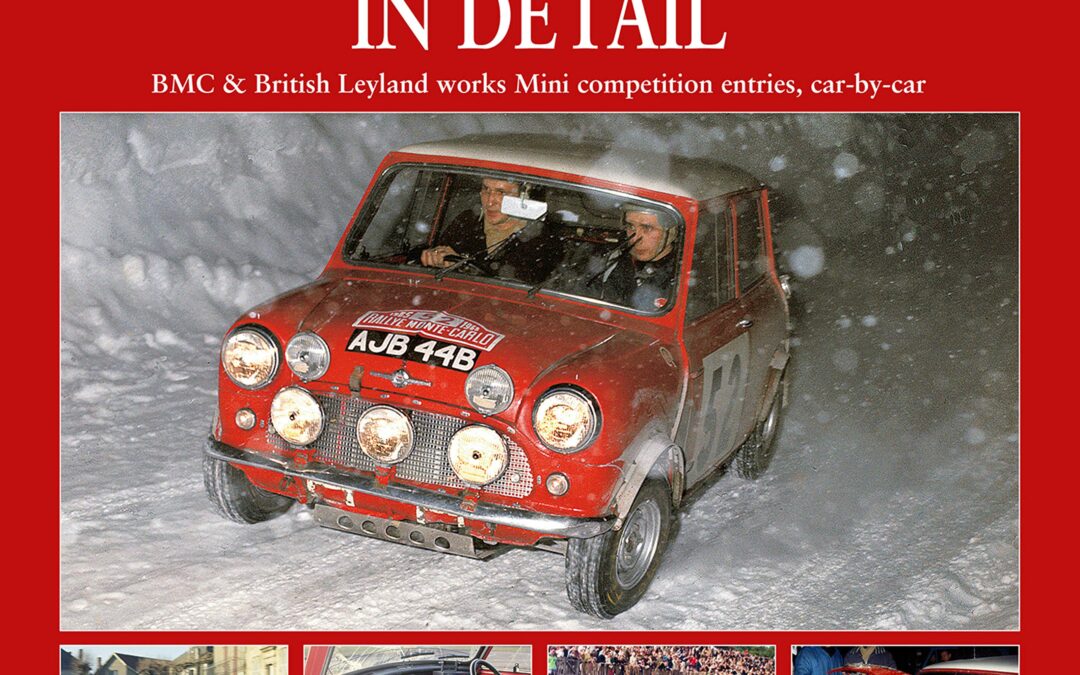
The works Minis had a long and distinguished competition history between 1959 and 1970, when British Leyland bosses closed the Abingdon Competition Department. The car started its competition career chasing class awards with the diminutive 850cc Mini, but once race car designer John Cooper persuaded BMC that they should build a hot version, the Mini Cooper was born and things moved up a gear.
With the introduction of the Mini Cooper S, the car soon became a world beater. Winning the 1964 Monte Carlo Rally in the hands of Paddy Hopkirk was a watershed moment which the Abingdon team repeated three times. During that 11-year period, 77 works Minis were built, competing in more than 300 events, most of them international rallies. The 1969 season, when the works Minis went racing, is also covered, along with the rallycross events.
Works Minis in Detail covers each one of those 77 cars which, in their distinctive red and white paintwork, were a force be reckoned with wherever they competed. Build details of every car are provided, drawn from factory build sheets, with information also on when cars were reshelled and identities swapped. The details of the events entered and the drivers are the result of analysing hundreds of contemporary race and rally reports.
The result is the most in-depth study of the works Minis ever published, made possible by years of research by Robert Young, a lifelong Mini enthusiast. As the Mini Cooper Register’s ex-works registrar, club chairman and for many years archivist, he is well placed to write with authority. A proud owner himself, he has intimate knowledge of the little red cars.

The 1970s witnessed the rebirth of the British kit car. It may have been the decade that taste forgot, but it was also a period where nothing was off limits. Would sir or madam like their car with three wheels or six? How about a windscreen that handily doubles as a door? Perchance something more along the lines of an Edwardian ‘horseless carriage’ with no doors at all? Alternatively, maybe a sports car with a roof at waist level, or even a trike made of timber? How about endless permutations of all of these things and more? Excess All Areas – British Kit Cars of the 1970s is a bountifully-illustrated celebration of homemade cars at their best – and worst.
Author Richard Heseltine is a journalist, author and biographer. A former staff member on Classic & Sports Car and Motor Sport, he has written extensively for Octane, Magneto, Classic Cars, Auto Italia, Autosport and Absolute Lotus. Richard has authored books on subjects as diverse as the British specialist sports car industry and coachbuilt Ferraris. He became a published novelist in 2019 with the release of Life Near The Edge.
“It’s a book as much about lost car culture as it is about the cars themselves” Classic Cars magazine
“My personal book of the year… a fact laden gem” Steve Hole, TKC
“This is a great fun book… right up our street in creativity, ingenuity or just plain wackiness” Jeroen Booij, Maximum Mini

Lights Out, Full Throttle is the hilarious account of life in the F1 pit lane from two legends of the sport, Damon Hill and Johnny Herbert. Damon and Johnny here. Motorsport’s answer to Ant and Dec, just a lot more comprehensible and, all in all, a wee bit taller. Between us we have about 100 years’ experience of driving cars quickly and have competed in 261 Grand Prix spawning 25 wins, 49 podiums, one World Championship and 458 championship points. We even have a win at Le Mans to our names, as well as two smashed ankles, a broken arm, a broken wrist, a broken leg, about sixty broken ribs, a pierced upper thigh that missed Johnny’s twig and berries by millimetres, and a bruised ego or three.Basically, we’re two middle-aged men who are both what you might call physically compromised. That said, contrary to popular belief, we still have a modicum of bladder control and can talk Formula 1 with the best of them. Which brings us to our book. Despite its immense popularity, when it comes to things like humour and absurdity, Formula 1 is not exactly a ride on the big dipper and in that respect it hasn’t buttered our parsnips for decades. Well, nil desperandum boys and girls because we, Damon Graham Devereux Hill, OBE, and John Paul Herbert, No BE, are here to put the F back into Formula 1 by ditching aerodynamics, clean air and tyre degradation in favour of honest, forthright opinions and apocryphal stories involving automotive derring-do. And, derring-don’t!
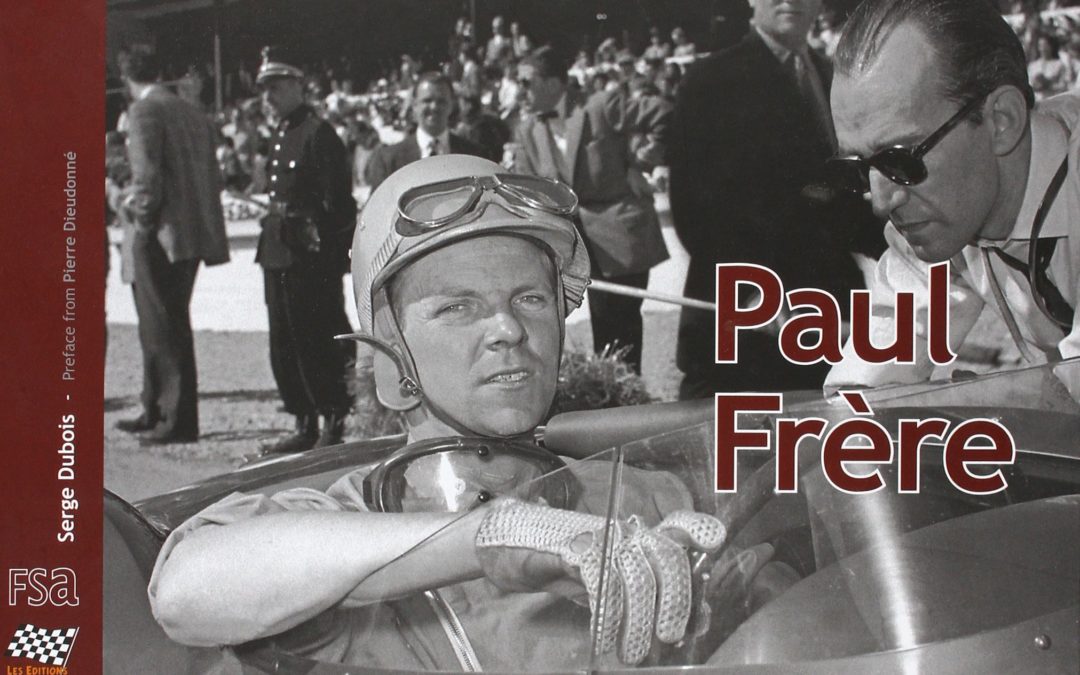
The Story of Paul Frère Journalist and Racing Car Driver
Paul Frère died in 2008 aged 91 and this is the first posthumous work on one of the world’s foremost auto journalists to appear. Still professionally active until his last months, the Belgian was a top flight racing driver in the 1950s and after winning Le Mans at the fourth attempt, retired to concentrate on journalism. Already well known as a race reporter, he became the doyen of motoring writers, his insatiable curiosity about all things automotive and mastery of detail making his copy amongst the most authoritative anywhere. Never a formally trained engineer, he could nonetheless grasp technical concepts and convey them and his ability to do this in English and German as well as his native French gave him international visibility. Author of several works on driving and racing, the way he could communicate exactly how a car was behaving meant that his skills as a consultant were always in demand; long a privileged insider at Porsche, he was also much appreciated in Japan where he struck up enduring friendships. For Mazda and Honda in particular, his assessments helped them build a European flavour into their cars.
An exceptionally modest and unassuming individual, he always appeared surprised at the reverence he inspired and the charismatic Frère always managed to make his interlocutor feel special. Now his life is celebrated in this compilation by Serge Dubois of his early life, racing career, and his activity as a journalist and adviser. The format of the book is landscape and the work is primarily pictorial. The author has had access to family and personal archives and the result is numerous previously unpublished photographs. The bulk of the text comprises reports of Frère’s races, mostly his own accounts turned into the third person; a substantial section is given over to tributes from individuals who knew and worked with him.

26 tips & tricks to improve your car * Quick and simple cleaning hacks * Use household objects … the family on long journeys (Concise Manuals)
Driving, owning, repairing and maintaining a car can be expensive, frustrating and time-consuming.
Car Hacks is here to explain how to use the things you have around your home to improve your car life, and balance your well-being in the process. From ensuring you never lose a screw when repairing your car, to spending less on fuel, and using cereal boxes to keep you car tidy, this book will open your eyes to the joys of car hacking.
Here are some favorite hacks you’ll find in Car Hacks:
- Interior hacks – Storage, cleaning, fixes, upgrades
- Exterior hacks – Bodywork, mechanical, quick repairs using everyday items
- Workshop hacks/Garage hacks – Working on your car
- Journey hacks – Easy storage solutions, luggage packing hacks, avoiding motorway food prices
- Driving hacks – Getting better fuel economy, avoiding motorway fuel prices, avoiding jams
- Family hacks – Entertaining kids (and adults!), simple tablet holders, ensuring everything stays charged, cable tidies, adding WiFi to your car
- Everyday hacks
- PLUS ‘Tool Hacks’ box outs placed throughout the book
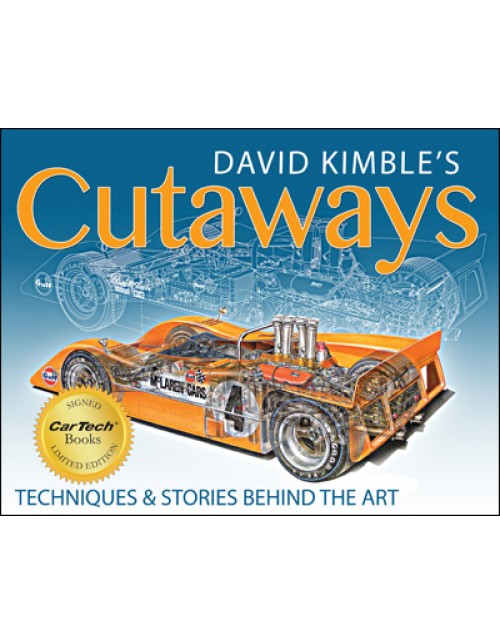
LAST ONE!
This limited edition is signed by author David Kimble. Only 200 copies are available! For enthusiasts reading magazines such as Motor Trend, Road & Track, and others, David Kimble is no stranger. His brilliant cutaway artwork has been gracing the pages of those publications for years. Whether he illustrated engines, transmissions, full-car chassis, sports cars, race cars, or classics, his cutaway artwork revealed, in excruciating detail, things that a camera lens could never capture.
In David Kimble’s Cutaways: The Techniques and the Stories Behind the Art, Kimble reveals the secrets, techniques, procedures, and the dedication to craft that is required to produce these amazing illustrations. He covers the step-by-step procedures while producing fresh artwork for this book featuring a McLaren Can-Am car as well as a vintage Harley-Davidson. Although the procedures covered here are unique to Kimble, and pretty much a pipe dream to mere mortals, this title provides an inside look into how he does it. Also included are the stories and tales of how it all started, traveling the world to illustrate cars, behind the scenes with manufacturers, the Corvette years, as well as a gallery of many illustrations.
Never before has David Kimble provided a look into his cutaway “skunkworks,” or shared the procedures for bringing these beautiful technical illustrations to life. This book is a must-have for any automotive or art fan.
This book is a 2015 International Automotive Media Competition (IAMC) Gold Medal Winner and Best of Books Winner.

After World War II, suburbs proliferated around California cities as returning soldiers traded in their uniforms for business suits. After-hours leisure activities took on an island-themed sensuality that bloomed from a new fascination with Polynesia and Hawaii. Movies and television shows filmed in Malibu and Burbank urged viewers to escape everyday life with the likes of Gidget and Hawaiian Eye. Restaurants like Don the Beachcomber and Trader Vic’s sprang up to answer the demand for wild cocktails and even wilder décor. The culture–a strange hodgepodge of idols, torches, lush greenery and colorful drinks–beckoned men and women to lose themselves in exotic music and surf tunes. Authors Jason Henderson and Adam Foshko explore the state’s midcentury fascination with all things Tiki.
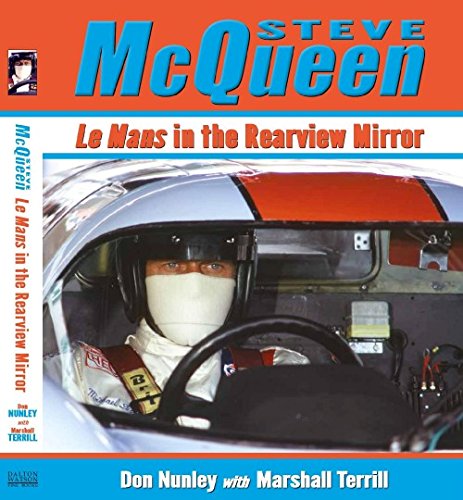
My name is Don Nunley, and I was the propmaster on Le Mans. While authors, documentary filmmakers, motoring scribes and racing enthusiasts have told and retold the story of Le Mans for decades – and for the most part they got right – I was actually right there as it all unfolded. There was nothing positive to say about the 106-minute motion picture at the time we started making it in June 1970. Six months later when filming mercifully ended, there was no wrap party, no toasts, no grand farewells; everyone just quietly went away, thanking God their ordeal was finally over. Steve McQueen was a real life racing fanatic, and Le Mans was supposed to be his cinematic dream come true. But the movie left him with bitter feelings and lasting emotional dents in his armor. There were conflicts with directors, personal excesses, budget woes, a war with the studio, a shutdown, months of delays, an unfortunate accident that left one driver without a leg, and rumors that the production company hushed up the death of a second unit crew member. In one fell swoop, McQueen ended a 15-year marriage, severed ties with his longtime agent and producing partners, did away with his production company and lost a personal fortune, not to mention control of the passion project he had planned to make for over a decade. It has taken me years to understand and digest the complex phenomenon of Le Mans, which decades after its crash-landing at the box office and savaging by critics has finally found its vindication and the approbation its star dreamed of before things took such a wrong turn when the cameras started rolling. Steve McQueen would be blown away to see that Le Mans has left an indelible legacy in the auto racing world and movie industry.







